Monarch butterflies are on the move in what is likely to be a late migration.
Here in San Antonio, we’re entering peak migration time, as deemed by the calendar put together by Monarch Watch, the citizen science initiative that tracks the migrating insects. The calendar uses tagging data collected over decades to predict when the masses of Monarch butterflies are likely to move across specific latitudes on their way to Mexico.
The best way to enjoy the fun is to get outside as much as possible to see what’s going on with the famous flyers. But that’s not always possible. Work, school and/or other obligations always seem to get in the way.
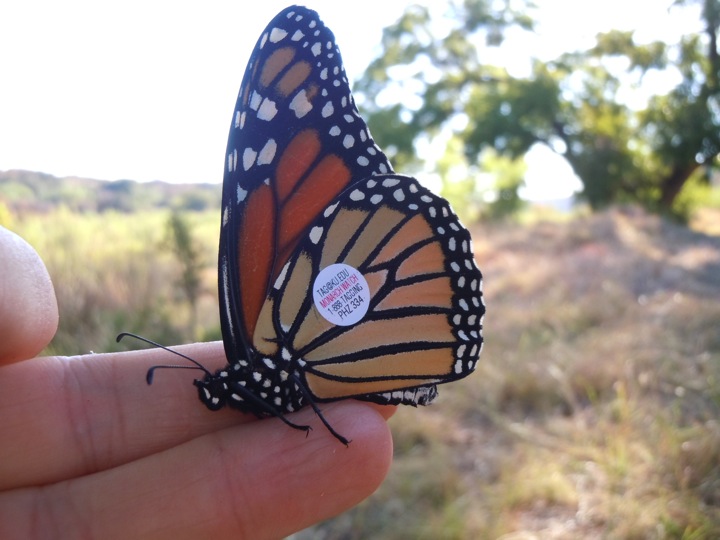
Won’t be long and Monarch butterflies will be passing throughout the Texas Funnel. Check out the online tools that will help you track the migration. Photo by Monika Maeckle
Not to worry. By tapping the resources below, you’ll be able to stay on top of the Monarch butterfly migration right from your desk or mobile device. Check out the cool tools available at the intersection of technology and (citizen) science listed below.
Journey North
First stop should be the Journey North website. A free internet-based program that explores the interrelated aspects of seasonal change, Journey North tracks wildlife migrations including hummingbirds, whales and bald eagles. This time of year, the Monarch migration gets top billing. Journey North founder Elizabeth Howard told us that hundreds of thousands of people per month visit the site during Monarch migration season.
And with good reason. Journey North offers constantly updated maps showing where adult Monarchs, eggs, caterpillars, and roosts have been spotted. Photos and reports from citizen scientists, butterfly enthusiasts, professional photographers and academics populate the site, along with training and resources for teachers and others.
In last week’s map, below, overnight roosts were recently observed in North Texas.
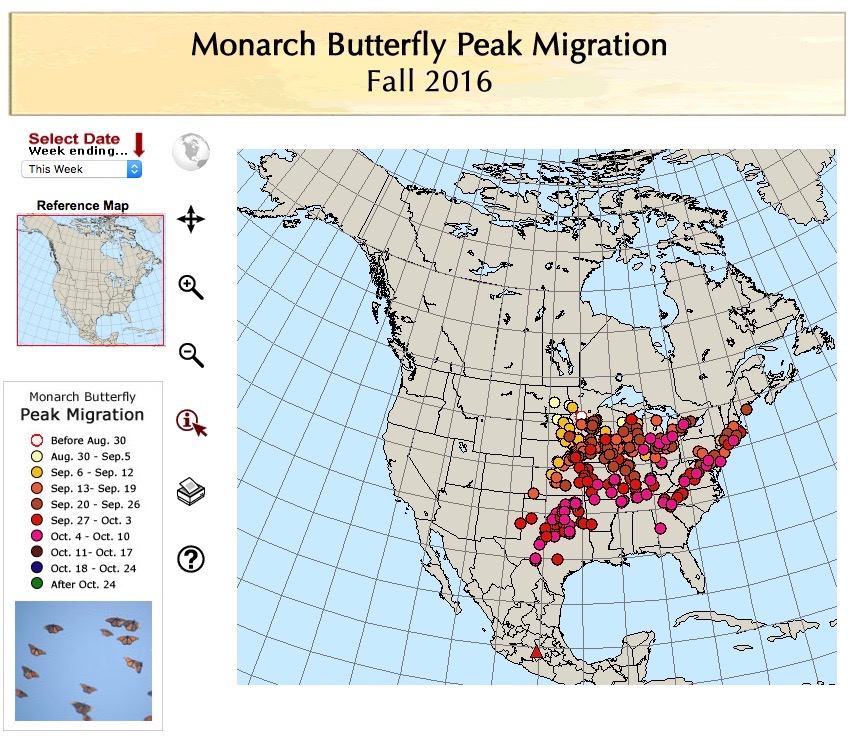
Journey North tracks the migration weekly using data submitted by volunteer citizen scientists. Click on the map above to see latest migration status. –Map via Journey North
Journey North also publishes a weekly migration update on Thursdays, often written by founder Elizabeth Howard, like this one from October 6: “A sudden and dramatic sweep into northern Texas occurred this week as the migration map shows. A river of wind carried monarchs by the thousands across Missouri and Oklahoma where a roost of 4,000 butterflies was reported — the largest of the season. On Friday, September 30, a dozen Texans reported in as a wave of butterflies arrived.

Monarch butterfly news, from many of my favorite sources–including Journey North and Monarch Watch.
Granted, not everyone uses Twitter, but an estimated 313+ million people and myriad organizations tap the free, real-time application as a search engine and personal or professional broadcast outlet.
That means you can visit http://search.twitter.com and punch in “monarch butterflies” or “monarch migration” or “tagged monarch butterfly” and dozens of hours-old “tweets”–brief 140-character updates—will be returned, telling you where Monarchs are flying RIGHT NOW.
For example, this search of “monarch butterflies” on Twitter today, retrieved a feed that included these beautiful photos.
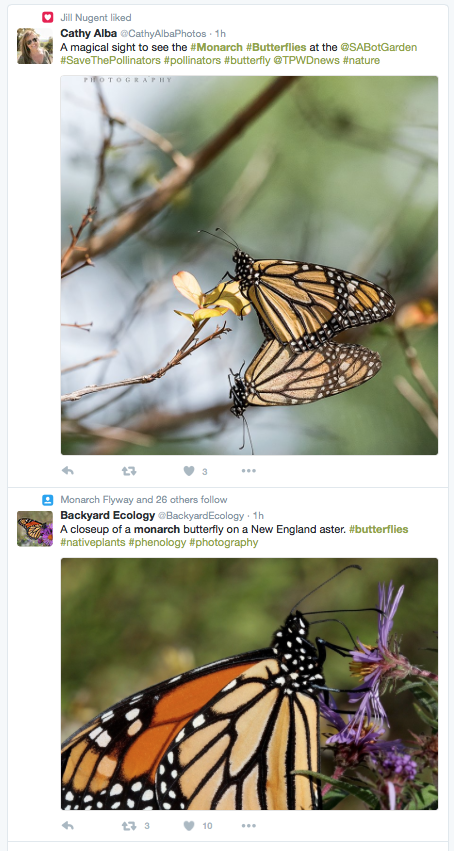
Twitter indexes the last 3200 tweets of any individual, so if you’re looking for historical archives, better check Google and other search engines. You can try searching Google News, but this won’t return the real-time reports Twitter delivers. Check it out.
Wind Map
For those of us who live in the Texas funnel, the wind plays an especially significant role in planning for Monarch tagging outings. During Monarch season, I plot each weekend for maximum Monarch activity.
Before leaving town, I check the Wind Map, a fantastic tool that shows which way the winds are blowing. If winds are coming out of the North, that means Monarchs will be riding the wave and we could have a big mass when they drop from the sky at sunset and roost for the night.
If winds are coming from the South, Monarchs won’t be moving much. That could mean they’re stranded in place, which could also make for good tagging since they will likely hang out and nectar on late blooming flowers.
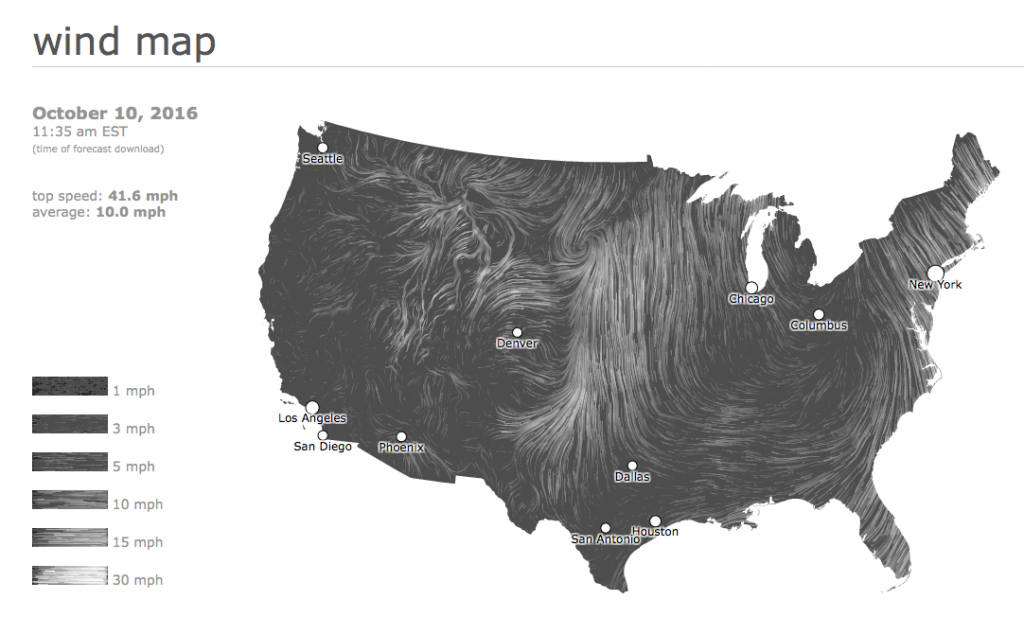
Check the wind map and see which way the winds are blowing. This tells us alot about how Monarchs can move south toward Mexico–or not. Screen grab via Wind Map
Either way, the map lets us know what’s coming. Plus, it’s simply a dreamy tool, with it’s visual articulation of nature’s breath expressed in real-time.
As the site descriptor says: “An invisible, ancient source of energy surrounds us—energy that powered the first explorations of the world, and that may be a key to the future. This map shows you the delicate tracery of wind flowing over the US.”
The wind map is an art project of Fernanda Viégas and Martin Wattenberg who lead Google’s “Big Picture” visualization research group in Cambridge, Massachusetts. The talented team are committed to a “rigorous understanding of visualization” informed by their Ph.Ds–Viégas’ graduate degree from the MIT Media Lab; Wattenberg’s in mathematics, from U.C. Berkeley.
LOVE this project.
Monarch Watch and Journey North Facebook Pages
If you’re reading this and you’re on Facebook, then you likely have already “LIKED” the Monarch Watch and Journey North Facebook pages. If not, go ahead, do it now, and join the party. (And while you’re at it, why not LIKE the Texas Butterfly Ranch Facebook page?)
With more than 38,000 fans, Monarch Watch’s page serves as a delightful online plaza where the Monarch Watch team from the University of Kansas engages with the rest of us to share information, photos, and wax passionate about Monarch butterflies and their migration. Citizen scientists like Rachel Shoemaker form Bixby Oklahoma, recreational observers, and professional and amateur biologists and entomologists join the conversation.

Screengrab via Facebook.
The Journey North Facebook page, with more than 24,000 fans is equally engaging. Journey North posts regular updates and visitors like Peggyanne Wink in Pennsylvania share sightings and observations (see below).

Screengrab via Facebook.
Numerous other Monarch butterfly pages have cropped up on Facebook in recent months, including this one that tracks Migrant Monarch Tag Reports. The page is a closed group, meaning you have to request access. It describes itself as a page “created for those people who find tagged monarch migrants. Take a picture if you can of the tag number or post the tag number so people can track their tagged monarchs. Please only post about tagged monarchs you’ve witnessed or found.”
Monarch Watch Website
Journey North devotes itself to wildlife migrations besides Monarch butterflies, but the Monarch Watch website brags Monarch butterflies, all the time.

Based at the University of Kansas at Lawrence, Monarch Watch founded the citizen scientist tagging program embraced by thousands of us who tag Monarchs each fall. Its comprehensive website offers information on how to tag a Monarch, raising milkweed, rearing Monarch caterpillars, and a database of all the Monarch tags recovered in Mexico, so those of us who tag can find out if any of our butterflies made it home.
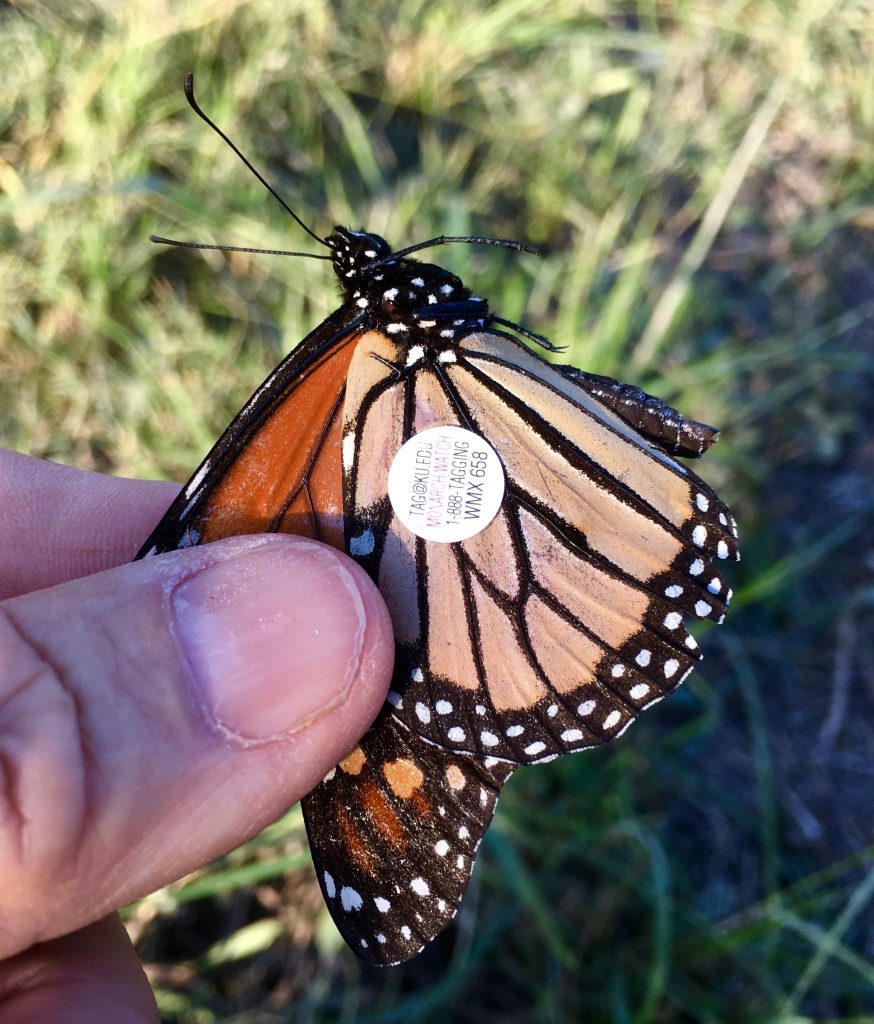
Thanks to Monarch Watch and the miracles of social media, I was able to determine that this ragged fellow, netted at the Texas Butterfly Ranch on October 1, 2016 on the Llano River near London, Texas, was tagged in southern Oklahoma. Photo by Monika Maeckle
Thanks to Monarch Watch, I was able to determine that the butterfly I netted on October 1 this year had been tagged in Tishomingo, Oklahoma nine days earlier. Pretty cool story–read it here.
The site posts predictions for when the peak migration will occur at your latitude based on Monarch Watch scientists’ well-researched opinions. The Monarch Watch blog is also worth a look and you can join thousands of others to get on the mailing list.
D-Plex List
If the above won’t sate your migration curiosity, then consider signing up for the D-PLEX list, an email exchange that includes about 800 scientists, conservationists, enthusiasts, and others, including some very interesting characters.
Named after the Monarch butterfly’s Latin designation, Danaus plexipus, the D-PLEX is an old fashioned email listserv started by Monarch Watch founder Dr. Chip Taylor and invites the public. Sign up to receive D-PLEX emails on the Monarch Watch webpage.
Careful, though. The D-PLEX can overtake your email inbox. Conversations can escalate, generating dozens of emails a day, many of which you may not find useful. Sometimes exchanges devolve into rude online arguments. I’ve set up all D-PLEX emails to forward to a special email box that I check periodically, so as not to be overwhelmed.
Don’t forget to check in with us here at the Texas Butterfly Ranch, too. We’ll do our best to keep you posted.
Related posts:
- Butterfly bonanza: Monarch netted on Llano River tagged in Oklahoma
- How to Tag a Monarch Butterfly in Six Easy Steps
- What does climate change mean for Monarch butterflies?
- Snout-nosed butterfly invasion returns to South Texas
- New study: late season nectar plantsmore important than milkweed to Monarch migration
- Should You Bring in a Late Season Caterpillar into Your Home?
- How to Tell Queens from Monarchs
- How to Raise Monarch Butterflies at Home (First of Two Parts)
- Coming soon: Grupo Mexico copper mine in heart of Monarch butterfly roosting sites?
- Will the Monarch Migration Become Extinct?
Like what you’re reading? Follow butterfly and native plant news at the Texas Butterfly Ranch. Sign up for email delivery in the righthand navigation bar of this page, like us on Facebook, or follow us on Twitter, @monikam.


Leave A Comment